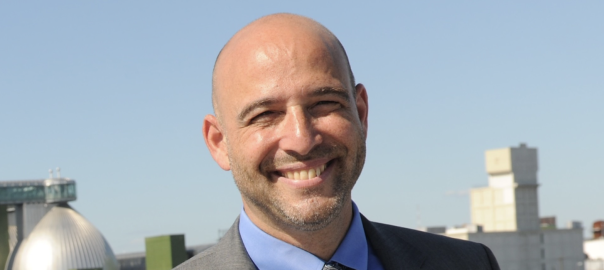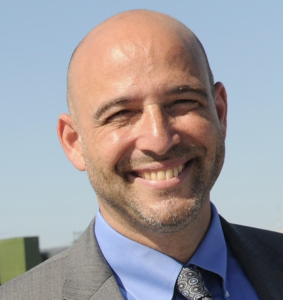
New York Marks Another Milestone in Safely Advancing Battery Energy Storage
Battery energy storage systems (BESS) are being used in thousands of projects around the world and with good reason. Energy storage is a powerful tool to modernize our electric grid, lower electricity costs, reduce pollution, and increase resilience for communities. Here in New York, under Governor Kathy Hochul direction, we’re taking bold steps to lead the nation in ensuring these systems are held to the highest safety standards as we scale up deployment for the benefit of all New Yorkers.
To realize the benefits of energy storage, safety must always come first. Like all electrical devices, BESS require strong oversight and clear standards to operate safely. That’s why, in 2023, Governor Hochul established the Inter-Agency Fire Safety Working Group (FSWG) to strengthen energy storage safety practices and give communities confidence in this technology.
As a flexible and innovative technology, energy storage acts like a large battery storing power when it’s cheap and clean, and sending it back to the grid when demand spikes – like during our recent heat waves – when electricity is most costly and we rely on air conditioning to stay safe and comfortable. That reduces strain on the grid, helps lower costs, and for vulnerable groups, can literally save lives. It is also essential to providing stable and reliable electricity during grid disturbances, such as storms or outages. And by reducing our dependence on fossil fuel generation, energy storage keeps our air cleaner and our neighborhoods healthier, especially in communities that already face the biggest environmental risks to their health.
As the Governor has so often noted, the economic growth here in New York in the tech, commercial, industrial, and manufacturing sectors will not only generate more jobs, but an even greater demand for power. As does the increasing number of everyday technologies we plug in, from computers and servers to appliances and electric vehicles. At the same time, we are steadily shifting toward electrification and cleaner sources of energy. That’s why the need for a reliable, flexible grid has never been greater and why energy storage is essential to our future. BESS are proven to support grid stability, reduce long-term system costs, and enable sustainable economic growth across the state. In fact, New York’s energy storage programs are projected to reduce statewide electric system costs by nearly $2 billion.
Since its formation, the FSWG has made meaningful progress with none more important than the recent adoption of its safety code recommendations by the State Fire Prevention and Building Code Council, placing New York at the forefront of national BESS safety standards. These newly adopted codes represent a critical safeguard to reduce the risk of fires in battery energy storage systems (BESS). Key provisions include:
- Independent engineering desktop reviews before construction or energization providing a vital quality assurance checkpoint to verify design and safety compliance.
- Central station monitoring of fire detection systems to ensure immediate and proper notification to local fire departments including around-the-clock monitoring for smart, safe systems and enhanced video monitoring with a 72-hour lookback feature for transparency and safety.
- Hazard support personnel requirements, ensuring qualified representatives with knowledge of the BESS system are available for dispatch within 15 minutes and able to arrive on-site within four hours to assist emergency responders.
- Require all BESS facilities to have an Emergency Response Plan (ERP) and provide site-specific training for local fire departments on project hazards and procedures.
These safety codes will officially take effect on January 1, 2026.
Even before the new codes take effect, the New York State Energy Research and Development Authority (NYSERDA) has already begun implementing these best-in-class standards across its energy storage programs. As part of this effort, every large project supported by NYSERDA undergoes a rigorous desktop review conducted by nationally recognized subject matter experts to assess safety and technical compliance. In addition, NYSERDA ensures robust emergency response plans are in place, and that local first responders are properly trained to prevent incidents from escalating, helping to keep both them and local host communities safe. NYSERDA’s clean energy siting team also works closely with local governments to provide technical support, model laws, and tailored community education ensuring safety is embedded in every step of the siting and development process.
BESS has evolved rapidly and as a result local municipalities have been asking for this updated code, and NYS has answered. They now have the tools necessary to site, review and approve projects to ensure we have the most modern, affordable and reliable energy system to power our communities and economic growth.
Safeguarding the deployment of BESS is just one example of how NYSERDA is delivering innovative solutions to power New York’s future. We continue to evaluate all energy options objectively and invest wisely. Additionally, NYSERDA serves as chair of the State Energy Planning Board, which recently released New York’s Draft State Energy Plan for public comment at energyplan.ny.gov, and outlines a 15-year outlook through 2040. The plan aims to guide energy direction with recommendations for meeting future energy demands while prioritizing reliability and clean, affordable energy.
As NYSERDA celebrates 50 years of serving New Yorkers, we remain committed to working with partners across the public and private sectors to build a cleaner, more affordable, and more resilient energy future for all.
David Sandbank, Senior Vice President, Integrated Energy Solutions, NYSERDA

